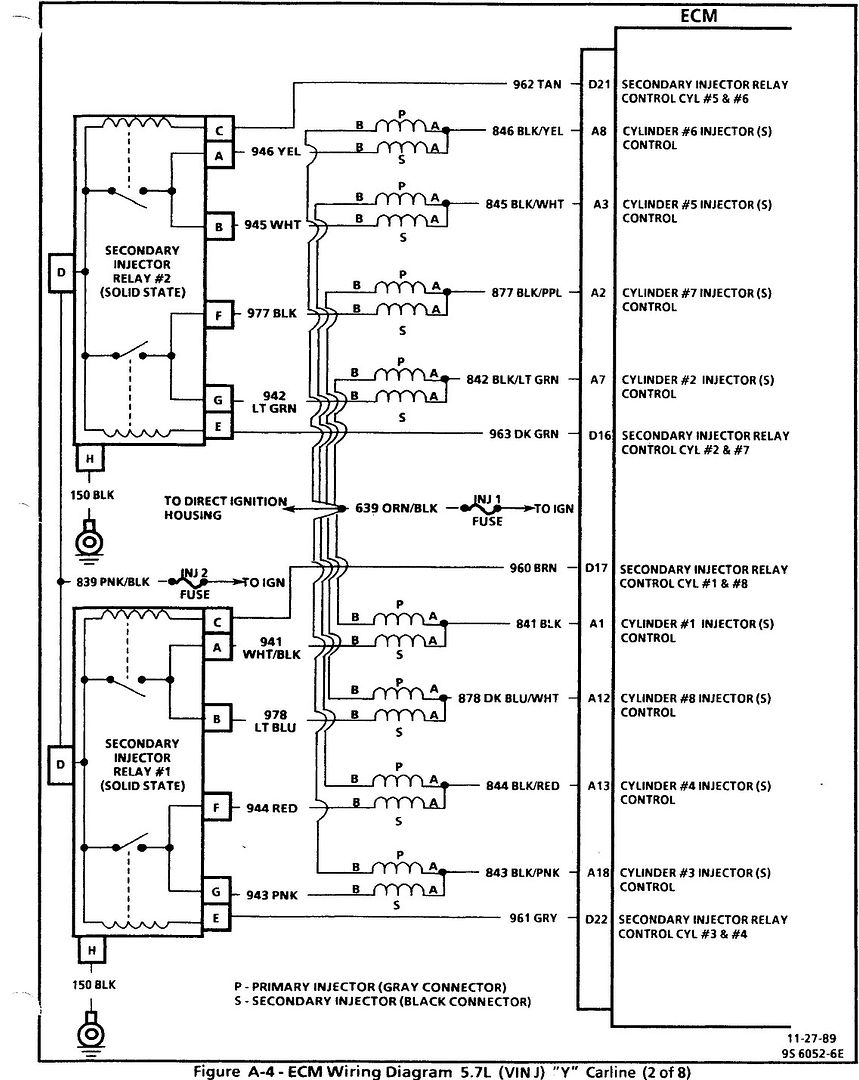Quote:
Originally Posted by Big D

Hi Paul, I also talked to Jon this morning and he said that you had called him. Thank you. He was helpful and gave me the same information. I find it hard to believe that the injector would be bad but i have to check it. So, the plenum is off, again, gettting pretty good at this. The wire bundle is tight and would not allow mis-connection but i checked it anyway, per Jons instructions, and the connectors are to the correct injectors. Jon said to use a 9 volt battery to check the injector and it fired just fine, just like the others that I checked next to the questionable one.
The wire diagram in the manual is not all that helpful, i'll need greater detail now to figure out how to wring out the wiring. Since the other primary injectors appear to be working correctly i'll need to shoot the wire from the injector to the direct ignition housing. The manual just shows all injector wires going to what appears to be one splice or terminal.
and then on to the ignition and the Direct Ignition Housing. It would be helpful if i knew what fired the primary injectors, the manual diagrams don't show that or explain it.
Ken, don't be alarmed, I'm sure it is a vehicle problem and not the injector. Jon is very helpful and understanding. He even offered up a replacement injector before I even verified this one was bad, but i declined the offer. So after my checks above, i feel confident the injector isn't bad and that it is a vehicle problem. The top end run is great, better then it ever was and i contribute that to the new inlectors. But, if i can't find any wiring problems i will have to do the injector swap and see if the problem follows the injector.
|
Do you have an FSM? What year Z is it? I have a 90 FSM, and it shows (referenced page) how the injector is controlled. I'll send the schematic to you, if that will help.
Far as the 9 volt battery goes, Jon said he uses 9 volts instead of 12 to reduce the heating/burning of the little coils inside the injector. However, a 5Ω resistor in series with a lead from your handy 12v battery will do exactly the same thing w/o having to round up a special 9 volt battery. And, that said, I can tell your I've done that test on my injectors "full strength" but just quickly tapping the probe to the injector and pulling the probe immediately away. There's no doubt about it, you can hear that injector's little "click" w/ NO issue, far as damaging the little coil. HOWEVER, using a 5Ω resistor will accomplish the same thing and reduce the current by approx 24% - same current as you'd expect using a 9 volt battery (which as I said: for the short one or two 'taps' to verify the "click" should do no harm either.
Schematic (for a 1990, but essentially the same for other years)

Essentially, the ECM provides a ground for the pair of relays for each cylinder. However the secondary injectors require further signal from the ECM, via two separate relays #1 (inj. 1+8, & 4+3) and relay #2 (inj 6+5, & 7+2) each controlling two secondary injector pairs.
If the #6 injector checked out (by direct application of voltage) then there is a connection somewhere. Hopefully the schematic will help. (I have another diagram too, and if I can find it, I'll send it too. It might help locate the various connectors and pins for further testing.
Update when you can...
Paul.